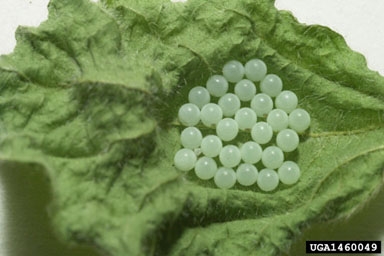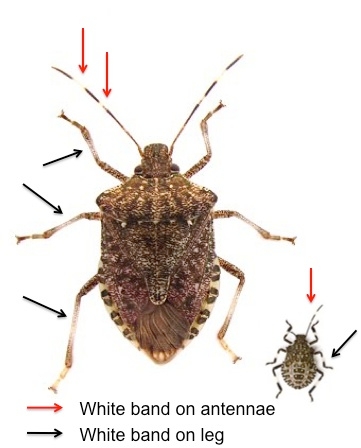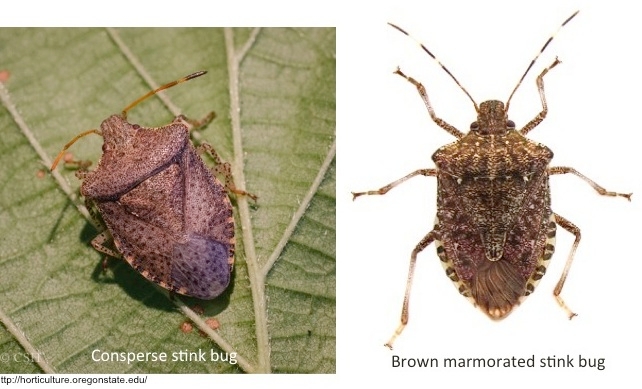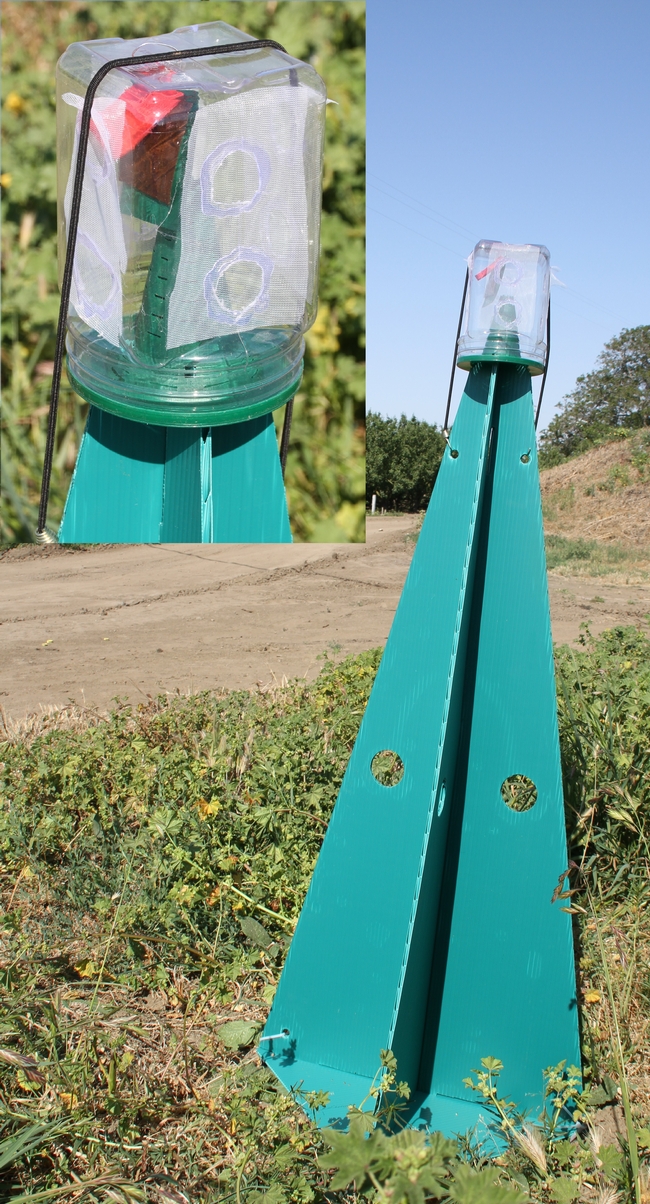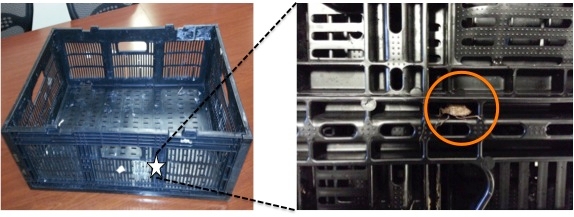The brown marmorated stink bug (BMSB), Halyomorpha halys, is an invasive species native to China, Japan, Korea, and Taiwan. It was first discovered in the United States in 1990s in or near Allentown, PA and distribution of H. halys has grown steadily. Now, it has been reported in 40 states, and the District of Columbia. BMSB is a key pest in tree fruit in the mid-Atlantic region; however, damage from BMSB has also been reported on vegetables, row crops (sweet corn and soybean), ornamentals, and small fruits (caneberry and strawberry) and grapes. Most importantly, BMSBis a serious nuisance because large numbers of adults seek out man-made structures for overwintering.
BMSB adult lays eggs in masses and typically an egg mass consists of ~28 eggs (Fig. 1). There are five immature stages (Fig, 2). In general, adult females are bigger in size than males. Identification of BMSB is not difficult. It has few unique features, which separate it from other native stink bug species in northern central coast of California. BMSB (both adult and nymphs) has two white bands on both antennae on the head and a white band on all the legs as well (Fig 3). These features separates BMSB from native stink bugs, for example, the consperse stink bug (Fig. 4).
In 2013, we monitored BMSB from May to October using the BMSB-pheromone (#10 pheromone), a lure [an aggregation pheromone, methyl (2E,4E,6Z)-decatrienoate of the brown-winged green bug, Plautia stali], and half of a dichlorvos-impregnated kill strip (to retain bugs) in a ground-deployed green-pyramid trap (Fig. 5). Six green-pyramid traps were deployed near caneberry, strawberry and apple orchards in Watsonville, Salinas, and Hollister areas. The lure used in these traps has reported cross attractancy to stink bug species including BMSB. BMSB-pheromone was replaced once in four weeks whereas, lure and kill strip were replaced every two week interval. Traps were serviced every week for stink bug captures. Traps captured few adults of native stink bugs such as consperse stink bug and banasa stink bug early in the season but no BMSB was captured.
Recently, we have intercepted BMSB multiple times from warehouses and automobiles from Santa Cruz and Salinas Valley. Overwintering adults have a unique behavior. In fall, adults seek structures, which are tight, dry and dark including packing or plant materials, pallets, crates (Fig. 6) stored in trailer-trucks parked in the areas that have natural populations of BMSB. They hitchhike and expand their distribution as these trucks move to new territories. BMSBs typically remain in the overwintering structures until the following spring as temperature increases.
BMSB is polyphagous - meaning it feeds on several plant hosts. In mid-Atlantic region, BMSB adults emerging from the overwintering sites find food from natural vegetation in the woody areas. As food become scarce in the woody areas, they move into orchards, row crops or vegetables and this movement could happen on daily basis causing economic damage. Santa Cruz has riparian areas and BMSB could easily find food to survive and establish if introduced multiple times. However, Salinas Valley is pretty much composed of irrigated fields. Thus, it is uncertain how quickly BMSB would establish in our area.
At this point, it is critical that we monitor BMSB in our area and potentially delay its establishment using management tools. We are not sure what impact BMSB would have on small fruits, strawberry, or vegetable production in the central coast areas. Also, please let me know once you find one. You could reach me (Shimat Joseph) or Mark (Mark Bolda by email (svjoseph@ucdavis.edu or mpbolda@ucdavis.edu) or phone (831-759-7359).
For further reading, please find the attached UC IPM pest alert and summary of BMSB research in its native range in Asia.
Acknowledgments
We appreciate the technical assistance provided by Research Assistant, Monise Sheehan, for technical assistance. We also thank the growers for providing space to deploy the traps in their orchards for the research and Tracy Leskey for providing the BMSB pheromone (#10-pheromone) for this project.
